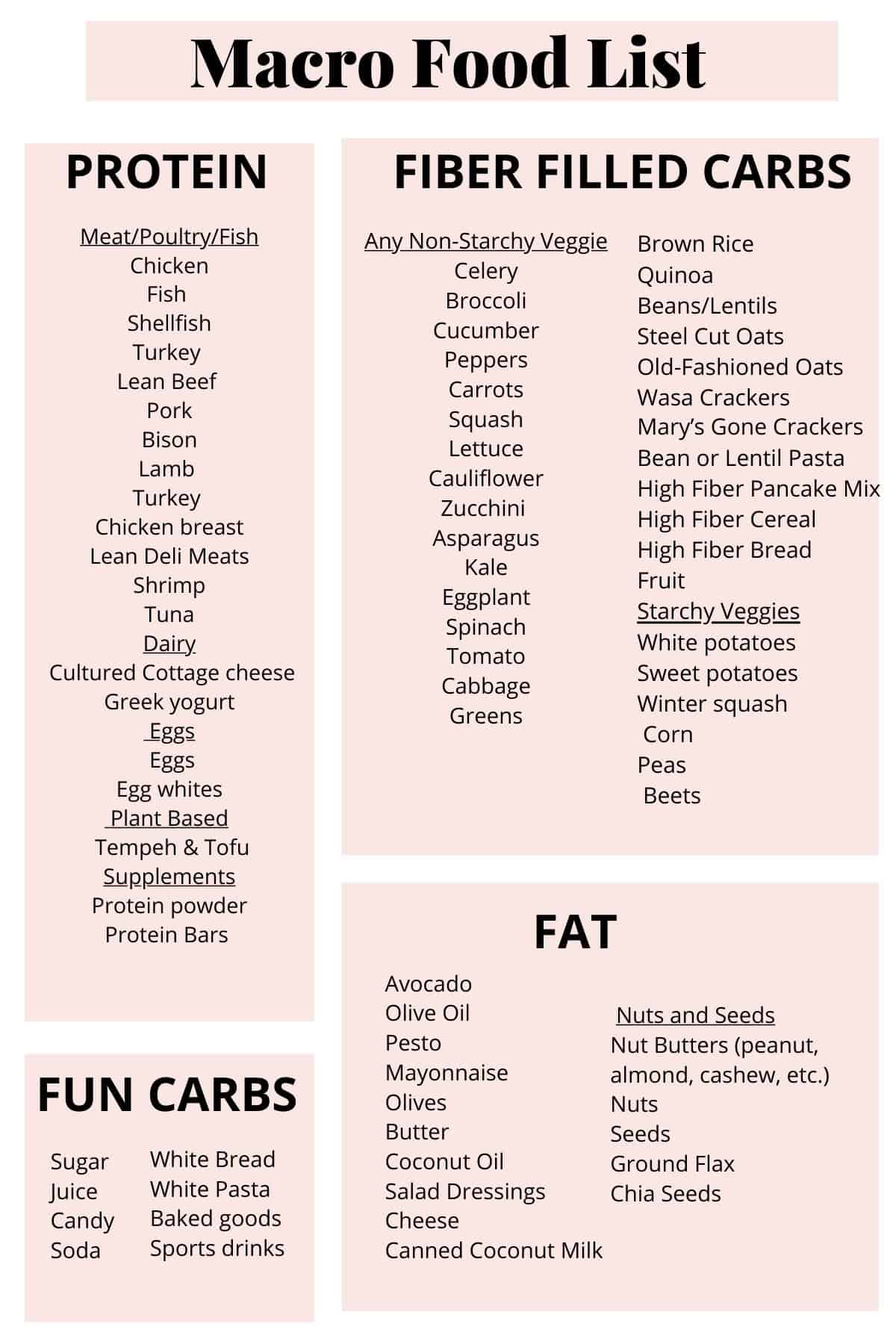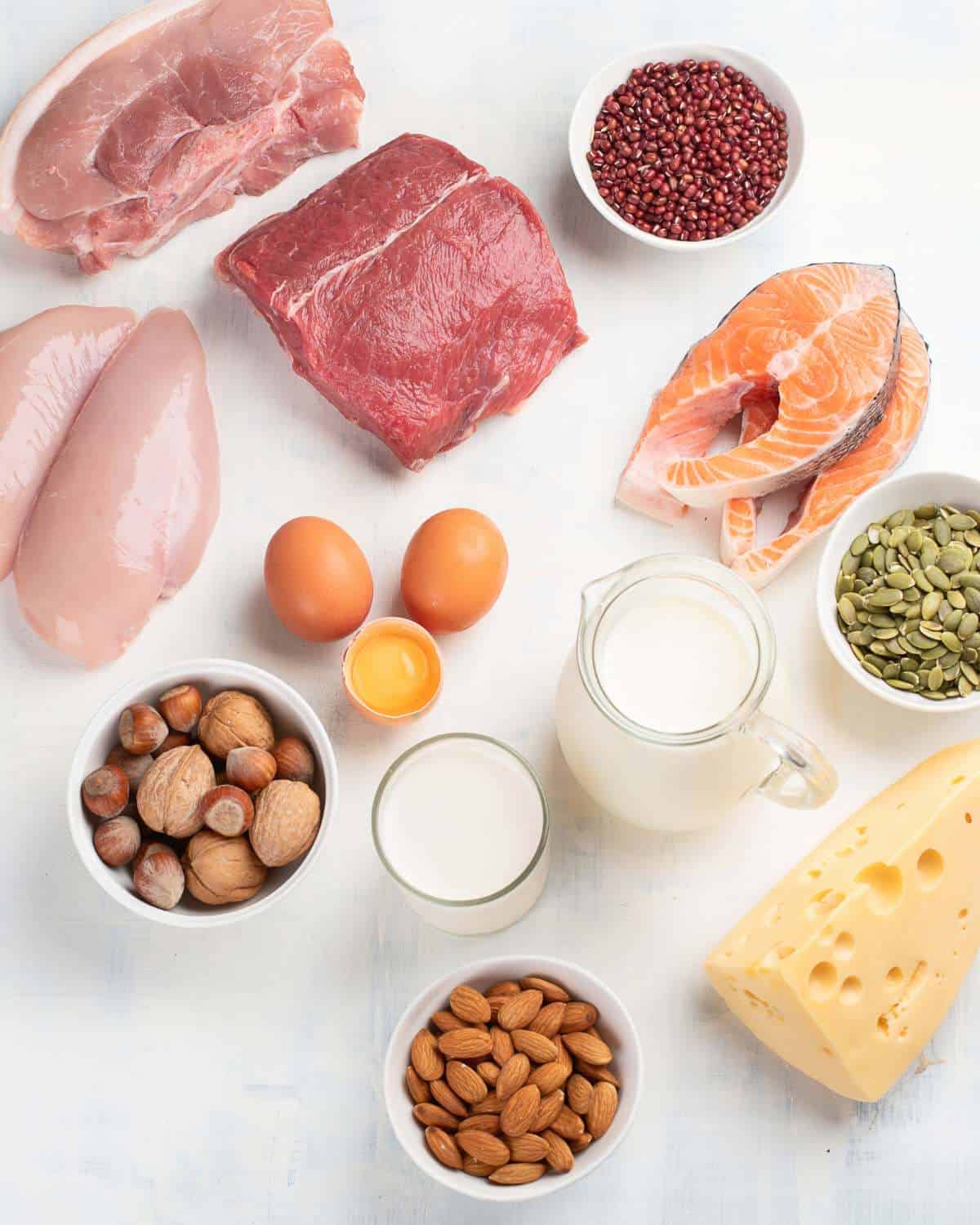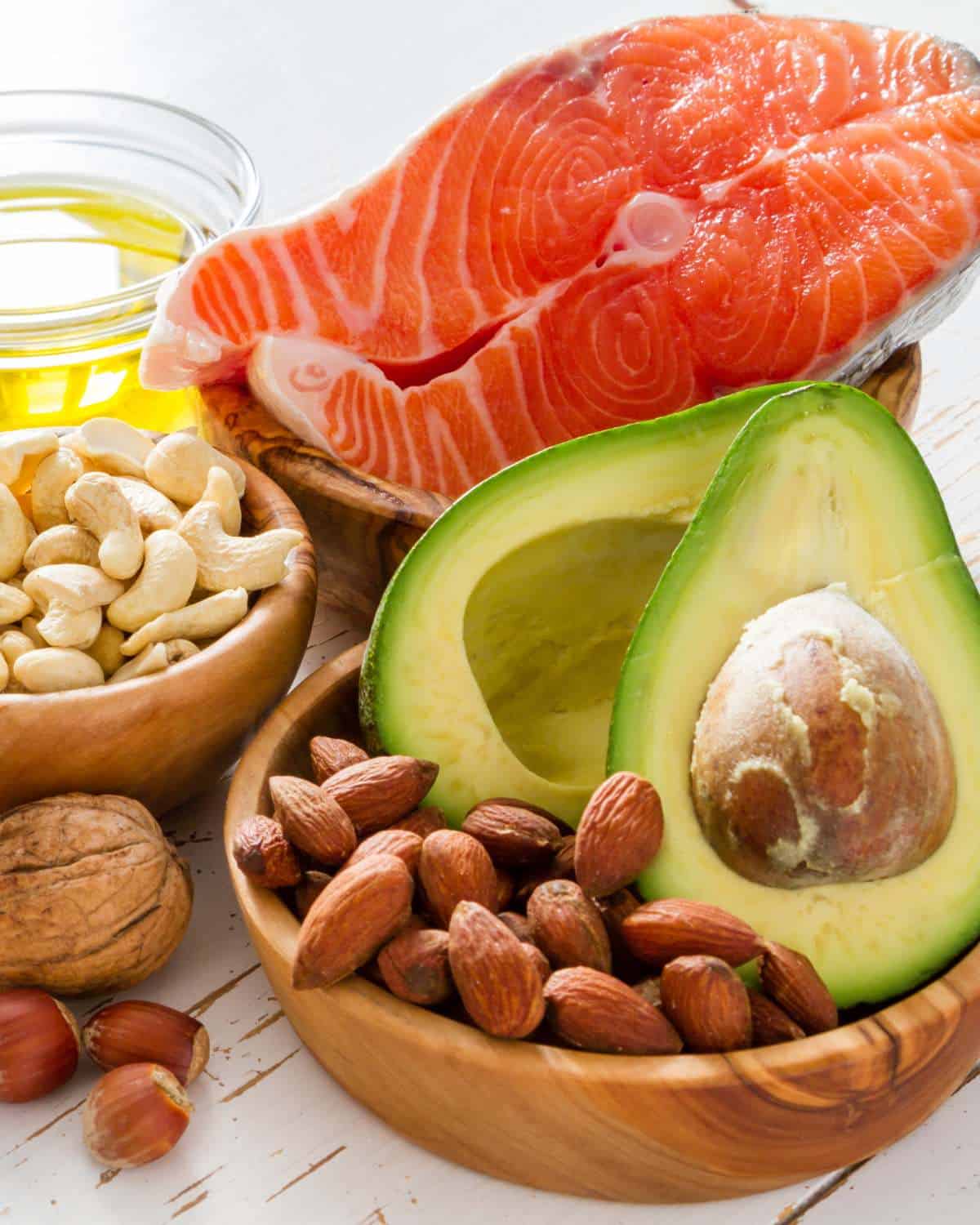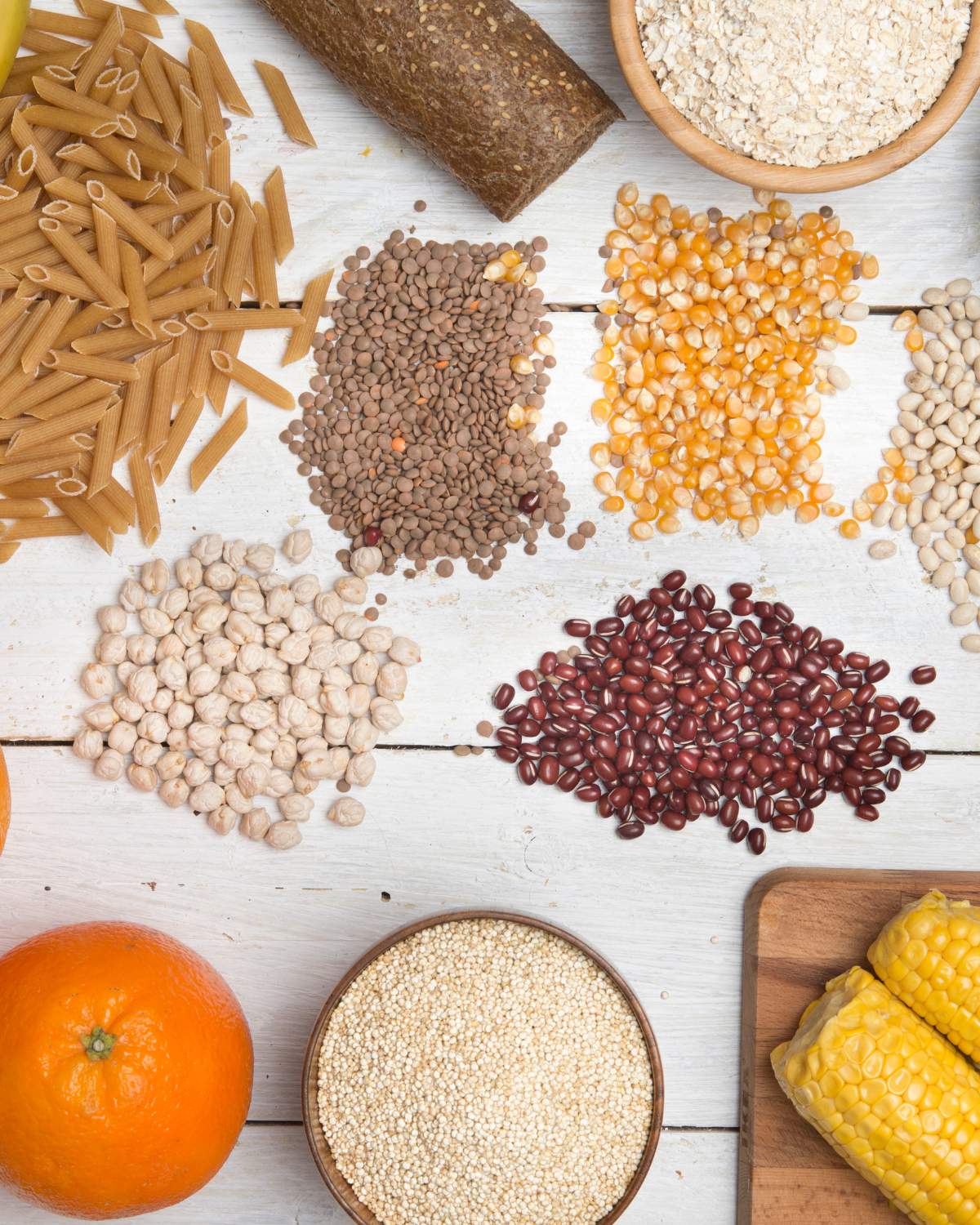Macros in Food List (Macro Friendly Food List)
This post may contain affiliate links. As an Amazon Associate I earn from qualifying purchases.
If you are looking for a food list with macros – you have come to the right place!
When it comes to achieving your weight loss goals, counting macros is a really powerful tool. By tracking your daily intake of protein, carbohydrates, and healthy fats, you can ensure that you are providing your body with the right fuel to meet your needs and reach your fat loss goals.
However, knowing which foods to choose can definitely be a challenge -especially when you first start out. With so many options out there, it can be overwhelming to figure out which foods are the best for counting macros.
If you are feeling confused about macros and which foods fit into which category (totally normal, by the way) – don’t worry, I’ve got your back.
Psst! Looking macro friendly recipes? Check out these macro friendly dinner recipes.
As a certified macro coach, I am on a mission to demystify macros and make them as simple and understandable as possible.
I’ve created a handy macro food list that breaks down which foods belong in which macronutrient group. This list will help you get a better understanding of what macros are and how to incorporate them into your diet in a delicious and nutritious way.
If you are brand new to macro counting be sure to check out my guide to Counting Macros for Beginners.

Make sure you hold onto this valuable resource.
Get your hands on the bonus macro list by downloading it at the bottom of this post.
What Are Macronutrients
I have a fun (and somewhat cheesy 😜) analogy for you – think of macros like your body’s own personal superhero squad – protein, carbs, and fat! Each member of the squad has their own unique superpowers that help keep your body healthy and strong. Protein helps repair and build muscles, carbs give you energy to power through your day, and fat helps keep your hormones in check and helps your body absorb important vitamins.
By keeping track of your macros, you can ensure that each member of the superhero squad is getting the attention and fuel they need to help you achieve your goals and feel your best.
How To Use This Macro Food List
Use this list as a guide to help you understand which foods belong in which macronutrient category. Once you’ve got that down, the possibilities are endless. You can use this list to inspire your meal plan, build the perfect plate, bring to the grocery store, or just get a better understanding of what macros are and how they work.
Please keep in mind, this is not an exhaustive list but it is a good starting point. There are definitely other options out there that fit into each macronutrient category.
So whether you’re a seasoned macro counter or just starting to dip your toes in the water, this list will help you to fuel your body and feel your absolute best.
Protein

Protein is the MVP of the macronutrient squad. Not only is it the most filling and satisfying of the three macros, but it’s also crucial for both muscle gain and preserving muscle mass
as it provides us with essential amino acids.
And let’s not forget that protein is a key player in keeping your energy levels in check throughout the day by keeping your blood sugar balanced.
Check out my guide on High Protein Meal Prep.
Lean Protein
Opting for lean protein sources leaves room in your diet for nutrient-dense, whole food sources of healthy fats, such as avocado.
- Chicken breast
- Turkey breast
- Fish (such tuna, tilapia, and cod)
- Shrimp
- Lean beef (such as sirloin or flank steak)
- Pork tenderloin
- Egg whites
- Greek yogurt (fat free)
- Cottage cheese (fat free)
- Tofu
- Lentils
- Edamame
- Quinoa
- Bison
- Venison
- Tuna (packed in water)
Moderate Fat Protein
These foods are still great sources of protein, but they contain slightly more fat than the lean protein options. However, they can still be part of a healthy and balanced diet, especially when paired with fiber-rich vegetables and healthy fats. As always, it’s important to choose high-quality sources of protein and vary your protein sources to get a wide range of nutrients.
- Chicken thighs (skinless)
- Turkey thighs (skinless)
- Pork chops (trimmed)
- Salmon
- Ground turkey (93% lean)
- Ground beef (90% lean)
- Chicken Sausage
- Greek yogurt (2% or 5% fat)
- Cottage cheese (1% or 2% fat)
High Fat Protein
While these foods are high in fat, they also contain varying amounts of protein and can be a great addition to a balanced diet. However, it’s important to be mindful of portion sizes and to choose high-quality sources of fat to promote optimal health.
- Fatty fish such as salmon, mackerel, and sardines
- Whole eggs and egg yolks
- Full-fat dairy products such as cheese, yogurt, and milk
- Nuts and nut butters such as almonds, cashews, and peanut butter
- Seeds such as chia seeds, hemp seeds, and flaxseeds
- Fatty cuts of meat such as beef ribeye, lamb chops, and pork belly
My favorite protein sources: chicken breast, turkey burgers, greek yogurt, cottage cheese, eggs, and deli turkey
Fats

Let’s set the record straight – fat is not the enemy! In fact, healthy fats are an essential part of a balanced diet and offer a ton of benefits to our bodies.
First of all, healthy fats are like the energizer bunny of macronutrients. They provide a dense source of energy that can keep you feeling full and satisfied for longer periods of time. Plus, they taste great! Avocado toast, anyone?
But healthy fats aren’t just tasty – they also support brain function and cognitive performance, help your body absorb important vitamins and minerals, and support hormone production.
- Avocado
- Extra Virgin Olive Oil
- Pesto
- Mayonnaise
- Olives
- Butter
- Coconut Oil
- Salad Dressing
- Cheese
- Canned Coconut Milk
- Dark Chocolate
Nuts and Seeds
- Nut Butters (peanut, almond, cashew, etc.)
- Nuts
- Seeds
- Ground Flax
- Chia Seeds
My favorite fat sources: avocado, nut butter, and dark chocolate
Carbohydrates

Ah, carbs, the macronutrient that has been both loved and vilified over the years. But let me tell you, there are some serious benefits to be had from including carbs in your diet.
For starters, carbs are your body’s preferred source of energy. That’s right, they are what gives you the oomph to power through your day, whether you’re running around with your kids, hitting the gym, or just getting through your workday.
But that’s not all. Carbs are also important for brain function and can help improve your mood and cognitive performance. Plus, they can provide you with essential vitamins, minerals, and fiber that your body needs to function at its best.
High Fiber Carbs (Complex Carbs)
Not all carbs are created equal. You want to focus on whole, unprocessed carbs that are that are high in fiber such as fruits, vegetables, whole grains, and legumes to get the most benefits and keep your blood sugar stable.
- Vegetables
- Fruit
- Brown Rice
- Quinoa
- Beans/Lentils
- Sweet Potatoes
- Oats
- High Fiber Crackers
- High Fiber Bread
- Bean or Lentil Pasta
- High Fiber Pancake Mix
- High Fiber Cereal
- High Fiber Bread
Simple Carbs (Fun Carbs)
Simple carbs – you know, the quick and easy ones – are like the party animals of the carb family. They’re the life of the party, but sometimes they leave you feeling a little bit empty inside.
These carbs are digested and absorbed by your body really quickly. Think sugary treats, white bread, candy, etc. They might give you a quick burst of energy, but that energy will fizzle out fast and leave you craving more.
Pro Tip
There is nothing wrong with indulging in some simple carbs every once in a while. Life is all about balance. But if you rely on these quick-fix carbs too often, you might find yourself feeling sluggish, moody, and unsatisfied. So, next time you reach for that candy bar or bag of chips, try to balance it out with some protein, healthy fats, or complex carbs.
- Sugar
- Juice
- Candy
- Soda
- White bread
- Pasta made with white flour
- Baked goods like cakes and cookies made with refined flour
- Jams and jellies
- Sweetened yogurt
- Sports drinks and energy drinks
My favorite carb sources: protein pasta, potatoes, rice, whole grain english muffins
How to Balance Macros
Determine Your Macro Ratios
Before you can balance your macros, you need to know your daily calories and how much of each macronutrient you should be consuming. This can vary based on your age, weight, activity level, and other factors. If this sounds overwhelming – I’m here to help! Take a look at my custom macro counts for personalized guidance.
Plan Your Meals
Now that you’ve figured out your macro goals, it’s time to get strategic with your meal planning and meal prep. When it comes to building a balanced meal, protein is the star of the show. So, start by prioritizing this nutrient and make sure you’re getting a full serving of it.
Once you’ve got that covered and have enough protein, you can add in the carbs and fats you need to hit your macros and keep your tummy happy. Think of it like building a house – you start with a solid foundation and then add the walls and roof. In this case, protein is your foundation and the carbs and fats are the walls and roof that complete your meal.
Need recipe ideas? Check out these Macro Friendly Dinner Recipes.
Track Your Intake
It can be tough to balance your macros if you’re not tracking what you’re eating. There are plenty of macro-tracking apps out there, like MyFitnessPal, that make it easy to log your meals and see how they fit into your macro goals.
Be Flexible
Don’t stress if you go over or under your macro targets occasionally. The key is to aim for balance over the long-term, not perfection in every single meal.
Experiment With Different Foods
One of the best things about tracking macros is that it encourages you to try new foods and find a variety of healthy options that fit your macro goals.
Frequently Asked Questions
A good rule of thumb is too aim for about 0.8 grams per pound of body weight. If that feels like too much I would recommend starting with 100 grams of protein per day and working you’re way up from here.
To figure out your food macros, you first need to determine your daily caloric needs based on your age, gender, weight, height, and activity level. Then, you can divide those calories into specific macronutrient percentages to figure out how many grams of carbs, protein, and fat you need.
Typically, a macro breakdown of 40% carbohydrates, 30% protein, and 30% fat is a great place to start for a balanced diet. However, this breakdown can vary depending on your individual goals and needs and it always best to check with a certified coach.
Vegetables are an excellent addition to your macros because they are packed with fiber, essential nutrients, and add volume to your meals. However, if you want to maximize your protein intake, consider incorporating veggies like peas, spinach, and artichokes into your diet as they have the highest amount of protein.
Final Thoughts
At the end of the day, understanding what you’re putting on your plate is the first step to being a mindful and healthy eater. That’s where a macro diet food list comes in handy – it takes the guesswork out of meal planning and helps you craft balanced meals with all the necessary macronutrients.
But don’t worry, using a macro food list doesn’t have to be a daunting task. With a little bit of practice, you’ll be able to easily identify which foods fit into which macronutrient category. And the best part? You’ll be able to enjoy a varied and satisfying diet that brings you closer to your goals without sacrificing taste or enjoyment.
